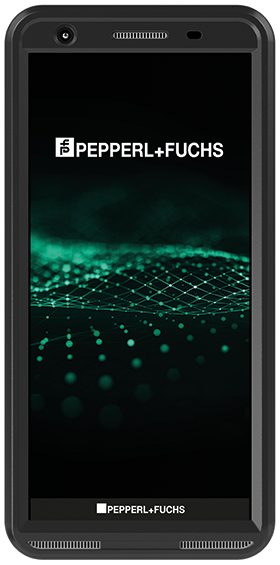

Consistently digitalised processes in the smart factory are a matter of course today, but not in potentially explosive atmospheres. The systems and devices used in these areas must have optimal protection mechanisms to ensure maximum safety. Explosion-proof smartphones offer a high level of connectivity and performance. They enable end-to-end networked and automated workflows in all conceivable potentially explosive areas, including industrial plants and the transportation routes of hazardous goods. This also applies in particular to the entire process chain, encompassing the production, storage and use of hydrogen.
In potentially explosive zones (Ex zones), there is a temporary or permanent atmosphere in which critical, ignitable concentrations of flammable gases, vapours, mists or dusts can occur. Such conditions arise in a wide variety of industrial applications. These include the production of petrochemical substances such as gasoline, kerosene and diesel in refineries, or the manufacture of paints, varnishes, adhesives and other chemical products. An increasingly common application with a high risk of explosion is the production, storage and use of hydrogen. This is because it is becoming especially important in the context of resource-conserving, sustainable and climate-friendly energy generation.
Hydrogen is produced industrially by the process of electrolysis. Electrolysis uses electricity to split water into hydrogen and oxygen. In the case of ‘green hydrogen’, the electricity required is generated exclusively from renewable energies, i.e., wind, solar or hydropower. The hydrogen obtained in this way is then used in a wide variety of applications. For example, it serves as an environmentally friendly source of power for heavy goods vehicles. Many municipal companies now also use the gas to power city buses or refuse collection vehicles. In addition, utility companies often combine the use of hydrogen with photovoltaics and wind power for an environmentally friendly energy mix. If too much electricity is generated on very sunny or windy days, the excess energy can be used to produce hydrogen by electrolysis and to store it in large caverns. This can then be used later to produce electricity using fuel cells and to compensate when energy supplies dip.
Explosion protection along the entire hydrogen value chain
Since this is a highly reactive and explosive gas, a high level of explosion protection must be ensured along the entire hydrogen value chain. This applies in particular to processes taking place in closed rooms, because the gas is less likely to volatilise here than in an open environment. Immediately after electrolysis, the hydrogen is compressed under high pressure so that it can be stored and transported at low volume. This process is especially explosion-critical, as are all other links in the hydrogen process chain, from transportation and storage to large-scale industrial use and the operation of hydrogen filling stations.
To ensure maximum process safety in this extensive hazardous area, all technologies, systems and devices used in it must comply 100% with explosion protection requirements. This also applies to mobile devices such as smartphones, tablets and wearables. These are indispensable in highly digitised and automated industrial scenarios in order to ensure consistent connection and communication between all players and networked processes. Malfunctions and overheating of the battery, static charging and flying sparks pose an especially high risk. These are among the most important ignition sources that can ignite the gas.
Therefore, the key requirements for explosion-proof smart devices can be inferred. For example, no electrostatic discharges that could ignite explosive atmospheres may occur during their operation. Furthermore, the device must not emit any sparks, and the battery must not overheat or cause leaks under any circumstances. In addition, it must always be possible to dissipate heat safely and the degree of protection (IP) must prevent the ingress of dust or liquids. The device should also be robust enough to withstand mechanical stresses such as knocks and falls, and also chemical influences such as cleaning agents. Last but not least, operation of the display with gloves should also be possible in harsh environments.
Intrinsically safe smartphones
The new Smart-Ex 03 from Pepperl+Fuchs is a smartphone solution that meets all these requirements. The manufacturer has a broad portfolio of connectivity components for secure signal transmission in Ex zones, especially for the hydrogen process chain. The range includes signal conditioners, remote I/O systems and intrinsically safe mobile devices such as the Smart-Ex 03. This enables the highest level of security, connectivity and performance required by highly digitised and automated process chains in the context of Industry 4.0. In addition to robust explosion protection functions, the device also offers maximum safety standards in terms of software.
Other features of the Smart-Ex 03 include a Qualcomm Snapdragon QCS 6490 processing unit with SDR 753 platform that supports state-of-the-art applications and ensures maximum future-proofing. With Android 13, the device has a state-of-the-art operating system and, thanks to Google ARCore, also enables augmented reality applications. The 5G mobile communications standard paves the way for smooth communication and fast transfer of large amounts of data. The Smart-Ex 03 also supports Wi-Fi 6 and 4G/LTE, which ensures seamlessly networked work processes in public or private mobile networks. The robust 6-inch multi-touch display with a resolution of 1080 x 2160 pixels ensures a high-contrast display. The smartphone also has freely programmable buttons and can be operated precisely, even when the user is wearing gloves. Another advantage is the intelligent device health monitoring, which raises safety to a new level and minimises downtimes in the Ex zone.
Ex zones place high demands on the systems and devices used in them. This also applies, for example, when hydrogen is involved. In order to enable secure, digital communication in this environment, intrinsically safe smartphones with high connectivity and performance are required. With the Smart-Ex 03 from Pepperl+Fuchs, companies are in safe hands in this regard.
| Tel: | +27 10 430 0250 |
| Email: | [email protected] |
| www: | www.pepperl-fuchs.co.za |
| Articles: | More information and articles about Pepperl+Fuchs |
© Technews Publishing (Pty) Ltd | All Rights Reserved